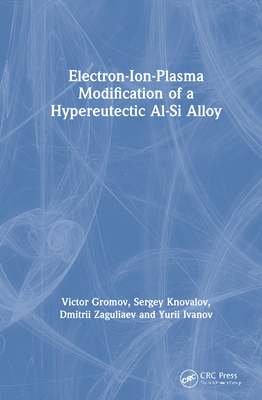Solar Cells and Their Applications(Hardcover)
暫譯: 太陽能電池及其應用(精裝版)
Lewis M. Fraas, Larry D. Partain
- 出版商: Wiley
- 出版日期: 2010-10-11
- 售價: $6,740
- 貴賓價: 9.5 折 $6,403
- 語言: 英文
- 頁數: 648
- 裝訂: Hardcover
- ISBN: 0470446331
- ISBN-13: 9780470446331
-
相關分類:
材料科學 Meterials
海外代購書籍(需單獨結帳)
買這商品的人也買了...
-
 The Pragmatic Programmer: From Journeyman to Master (Paperback)
The Pragmatic Programmer: From Journeyman to Master (Paperback)$1,940$1,843 -
 The Web Application Hacker's Handbook: Discovering and Exploiting Security Flaws
The Web Application Hacker's Handbook: Discovering and Exploiting Security Flaws$1,300$1,274 -
 Patterns for Performance and Operability: Building and Testing Enterprise Software (Hardcover)
Patterns for Performance and Operability: Building and Testing Enterprise Software (Hardcover)$4,390$4,171 -
 CCENT/CCNA ICND1 專業認證手冊, 2/e (CCENT/CCNA ICND1 Official Exam Certification Guide (CCENT Exam 640-822 and CCNA Exam 640-802), 2/e)
CCENT/CCNA ICND1 專業認證手冊, 2/e (CCENT/CCNA ICND1 Official Exam Certification Guide (CCENT Exam 640-822 and CCNA Exam 640-802), 2/e)$800$632 -
 iPhone SDK 開發範例大全 (The iPhone Developer's Cookbook: Building Applications with the iPhone SDK)
iPhone SDK 開發範例大全 (The iPhone Developer's Cookbook: Building Applications with the iPhone SDK)$620$527 -
 電路學 (Basic Engineering Circuit Analysis, 9/e)
電路學 (Basic Engineering Circuit Analysis, 9/e)$720$706 -
 雲端運算的關鍵技術與應用實例
雲端運算的關鍵技術與應用實例$420$357 -
 鳥哥的 Linux 私房菜-基礎學習篇, 3/e
鳥哥的 Linux 私房菜-基礎學習篇, 3/e$820$648 -
 程式設計師的自我修養-連結、載入、程式庫
程式設計師的自我修養-連結、載入、程式庫$580$493 -
 Google!Android 2 手機應用程式設計入門, 3/e
Google!Android 2 手機應用程式設計入門, 3/e$530$419 -
 深入淺出 Android 遊戲程式開發範例大全
深入淺出 Android 遊戲程式開發範例大全$620$484 -
 巧用 jQuery
巧用 jQuery$490$387 -
 雲端運算技術指南
雲端運算技術指南$490$387 -
 深入淺出 Android 系統原理及開發要點
深入淺出 Android 系統原理及開發要點$450$351 -
 最嚴選!ASP.NET 案例模組開發講座
最嚴選!ASP.NET 案例模組開發講座$580$458 -
 掌握 iPhone SDK 程式開發技巧:iPhone 與 iPod Touch 的進階行動開發技術 (iPhone SDK 3 Programming: Advanced Mobile Development for Apple iPhone and iPod touch)
掌握 iPhone SDK 程式開發技巧:iPhone 與 iPod Touch 的進階行動開發技術 (iPhone SDK 3 Programming: Advanced Mobile Development for Apple iPhone and iPod touch)$680$578 -
 Oracle DBA 手記:資料庫診斷案例與效能調校實戰
Oracle DBA 手記:資料庫診斷案例與效能調校實戰$580$458 -
 電腦網際網路(第五版)(國際版)(Computer Networking: A Top-Down Approach, 5/e)
電腦網際網路(第五版)(國際版)(Computer Networking: A Top-Down Approach, 5/e)$750$675 -
 猛虎出閘制霸版─最新 Java 專業認證 OCP Java SE 6 Programmer (原 SCJP 認證)
猛虎出閘制霸版─最新 Java 專業認證 OCP Java SE 6 Programmer (原 SCJP 認證)$780$616 -
 Android 應用開發揭秘
Android 應用開發揭秘$600$510 -
 Oracle 管理之道
Oracle 管理之道$890$703 -
 Android 案例開發完全講義
Android 案例開發完全講義$580$458 -
 前進 Android Market!Google Android SDK 實戰演練
前進 Android Market!Google Android SDK 實戰演練$850$672 -
 網路免費資源行銷術─部落格 + Facebook + 微網誌超 Easy
網路免費資源行銷術─部落格 + Facebook + 微網誌超 Easy$360$281 -
AWS 雲端企業實戰聖經─ Amazon Web Services 改造企業 IT 體質
$480$384
相關主題
商品描述
A major update of solar cell technology and the solar marketplace
Since the first publication of this important volume over a decade ago, dramatic changes have taken place with the solar market growing almost 100-fold and the U.S. moving from first to fourth place in the world market as analyzed in this Second Edition. Three bold new opportunities are identified for any countries wanting to improve market position. The first is combining pin solar cells with 3X concentration to achieve economic competitiveness near term. The second is charging battery-powered cars with solar cell–generated electricity from arrays in surrounding areas—including the car owners' homes—while simultaneously reducing their home electricity bills by over ninety percent. The third is formation of economic "unions" of sufficient combined economic size to be major competitors.
In this updated edition, feed-in tariffs are identified as the most effective approach for public policy. Reasons are provided to explain why pin solar cells outperform more traditional pn solar cells. Field test data are reported for nineteen percent pin solar cells and for ~500X concentrating systems with bare cell efficiencies approaching forty percent. Paths to bare cell efficiencies over fifty percent are described, and key missing program elements are identified. Since government support is needed for new technology prototype integration and qualification testing before manufacturing scale up, the key economic measure is identified in this volume as the electricity cost in cents per kilowatt-hour at the complete installed system level, rather than just the up-front solar cell modules' costs in dollars per watt.
This Second Edition will benefit technologists in the fields of solar cells and systems; solar cell researchers; power systems designers; academics studying microelectronics, semiconductors, and solar cells; business students and investors with a technical focus; and government and political officials developing public policy.
商品描述(中文翻譯)
一項關於太陽能電池技術和太陽能市場的重大更新
自從這本重要著作在十多年前首次出版以來,太陽能市場發生了劇變,市場規模幾乎增長了100倍,而美國在全球市場中的排名也從第一下降到第四。本書第二版中分析了三個大膽的新機會,供任何希望改善市場地位的國家參考。第一個機會是將針式太陽能電池與3倍集中技術結合,以在短期內實現經濟競爭力。第二個機會是利用太陽能電池產生的電力為電池驅動的汽車充電,這些電力來自周圍地區的太陽能電池陣列,包括車主的家,同時將他們的家庭電費降低超過90%。第三個機會是形成經濟“聯盟”,以足夠的經濟規模成為主要競爭者。
在這個更新版中,餵入電價被確定為公共政策中最有效的方法。提供了理由來解釋為什麼針式太陽能電池的性能優於更傳統的pn型太陽能電池。報告了19%針式太陽能電池和約500倍集中系統的現場測試數據,這些系統的裸電池效率接近40%。描述了裸電池效率超過50%的路徑,並確定了關鍵的缺失計劃要素。由於在製造規模擴大之前,政府支持對新技術原型的整合和合格測試是必要的,因此本書確定的關鍵經濟指標是完整安裝系統層級的電力成本(以每千瓦時的美分計算),而不僅僅是前期太陽能電池模組的成本(以每瓦的美元計算)。
本書第二版將使太陽能電池和系統領域的技術專家、太陽能電池研究人員、電力系統設計師、研究微電子學、半導體和太陽能電池的學者、具有技術焦點的商業學生和投資者,以及制定公共政策的政府和政治官員受益。


















